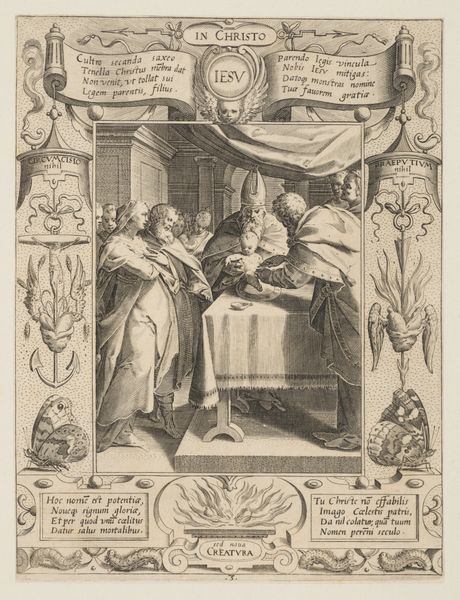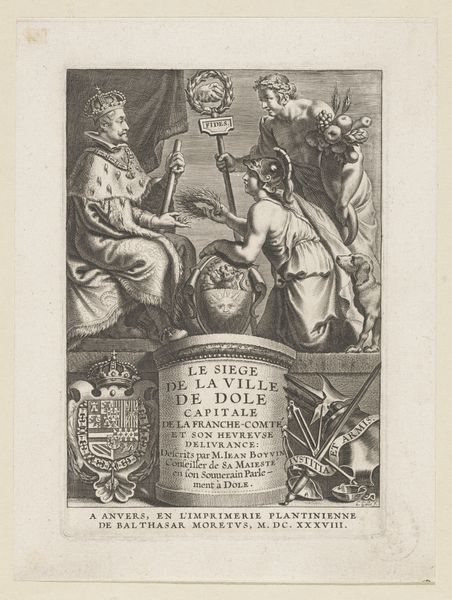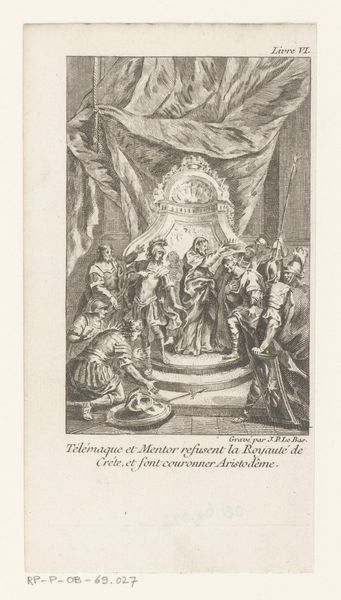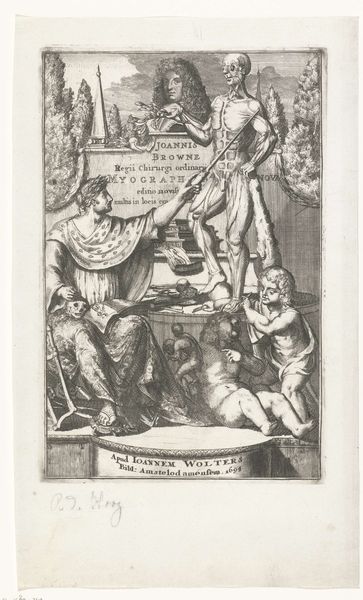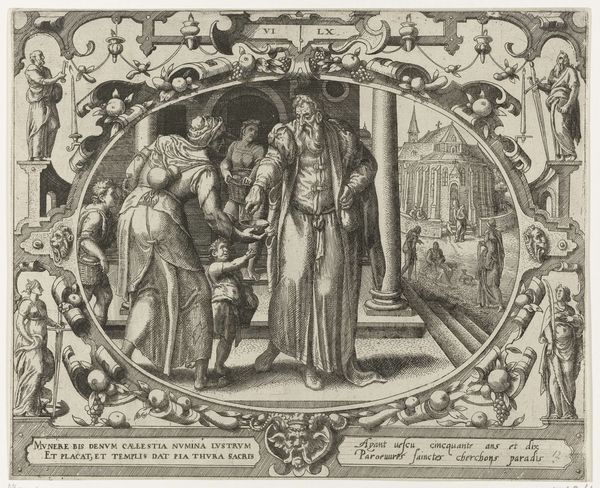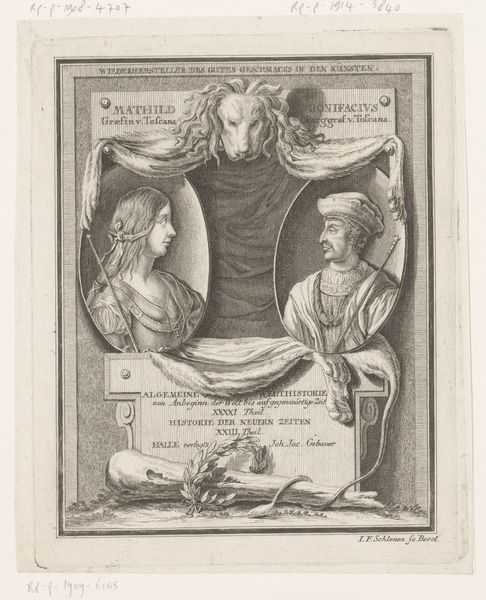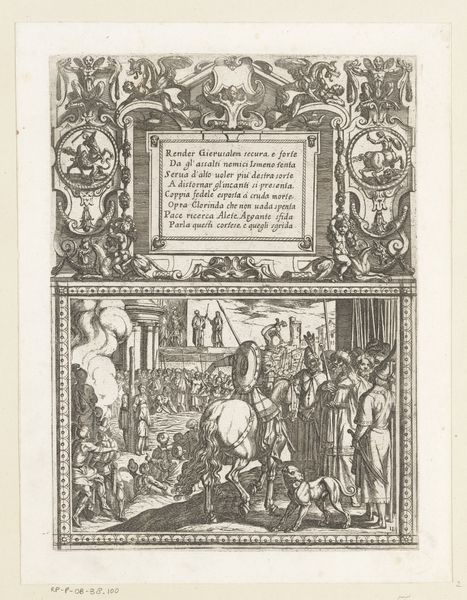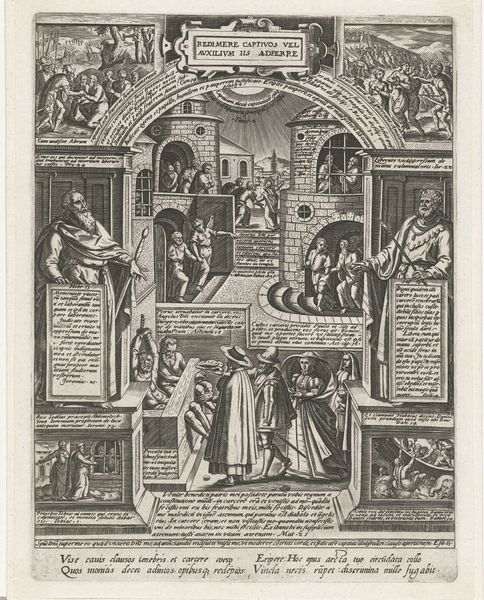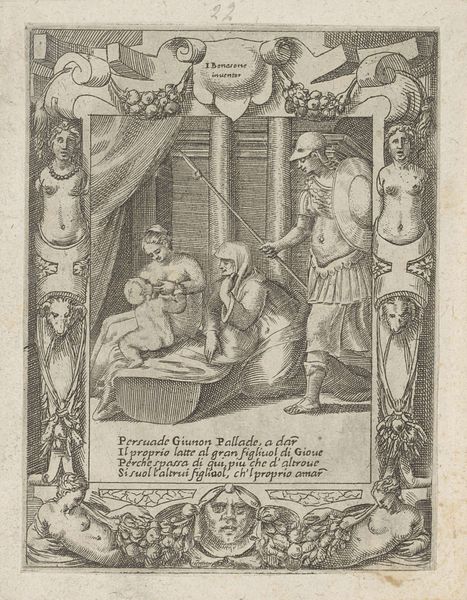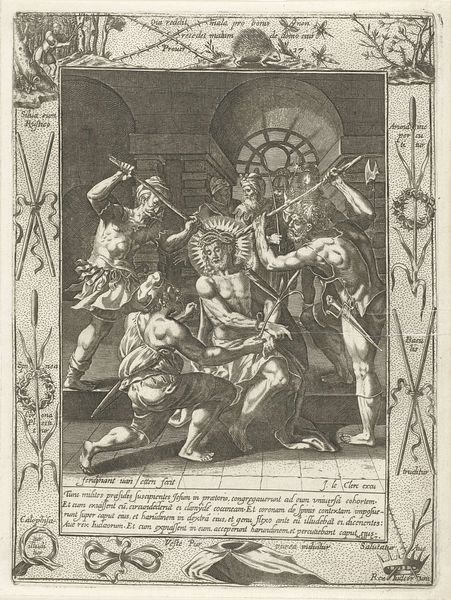
print, engraving
#
allegory
#
baroque
# print
#
old engraving style
#
figuration
#
pen-ink sketch
#
history-painting
#
engraving
Dimensions: height 156 mm, width 124 mm
Copyright: Rijks Museum: Open Domain
Editor: Here we have Johann Caspar Dooms' "Allegory of Good Governance," a print from 1650. There’s such formality here, with these heavily rendered figures. How do you interpret this work? Curator: It's crucial to unpack the social context. Allegorical prints like this functioned as visual arguments. Given its creation in 1650, amid the aftermath of the Thirty Years' War, we can consider this print as a statement on power, knowledge, and perhaps a yearning for stability. Editor: Interesting. I didn't initially consider the war. Who are the figures depicted? Curator: From left to right, we have a soldier, representing military strength, an academic holding the namesake plaque, and an allegorical figure likely representing Justice or Wisdom. A fourth kneeling figure extends knowledge, symbolized by the caduceus. The composition stages a delicate balance between militaristic power, scholarly knowledge, and Justice - an argument for composite good governance in times of social disruption. Do you notice anything specific about their interactions or attire? Editor: The armor and weaponry are juxtaposed with scholarly robes... and an allegorical woman stands opposite them. Almost a tableau vivant about ideal rule. It does read quite differently when placed within its historical moment. Curator: Precisely. What's more is who these images represent: were the intended audience, the university academic elite or others? Images, especially printed ones, could play powerful political and cultural roles. And in examining those, one sees both its intended role and the implicit claims to cultural authority and to create certain beliefs about social ideals and the justification of existing hierarchies. Editor: It highlights how something seemingly straightforward contains layers of meaning dependent on its context. Curator: Exactly. Art is never neutral; it's always embedded within a web of power, identity, and ideology.
Comments
No comments
Be the first to comment and join the conversation on the ultimate creative platform.
